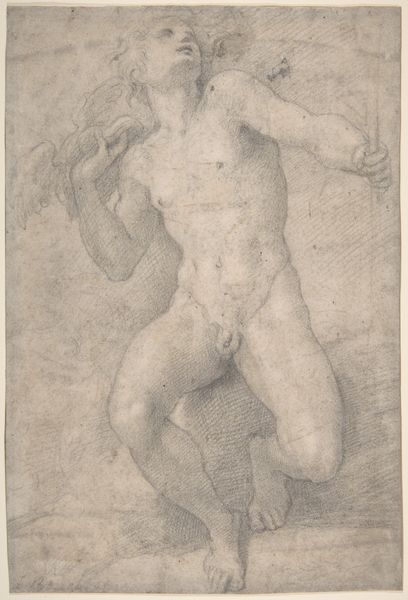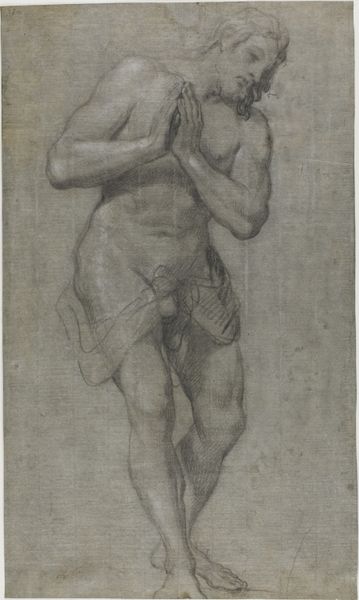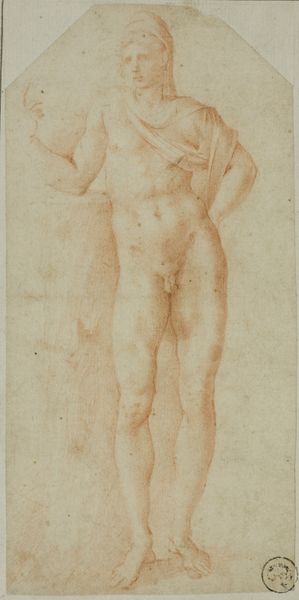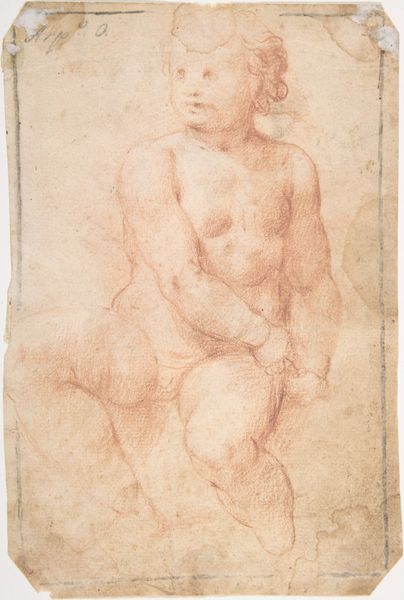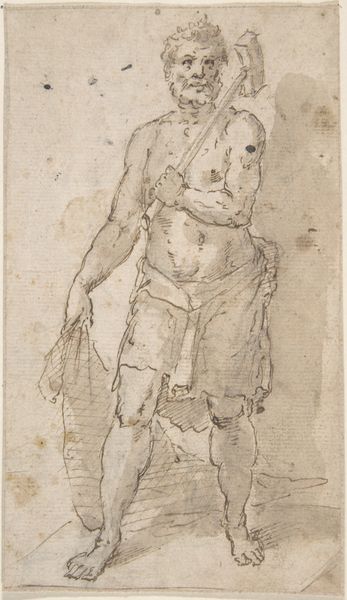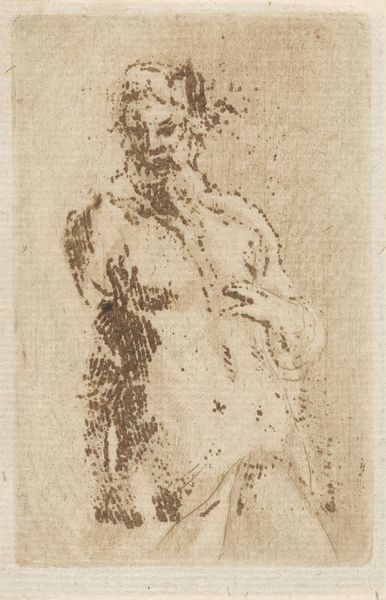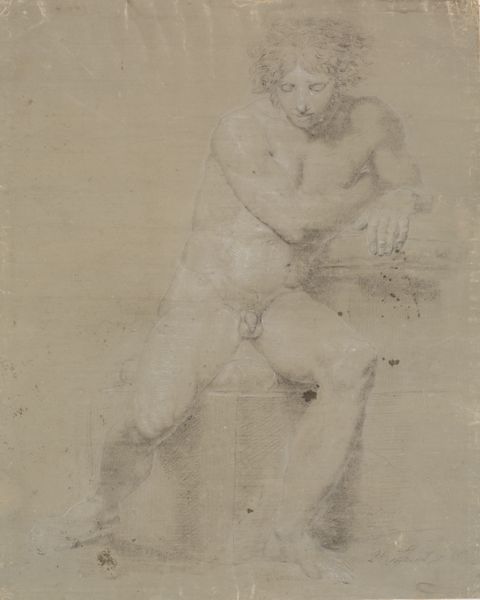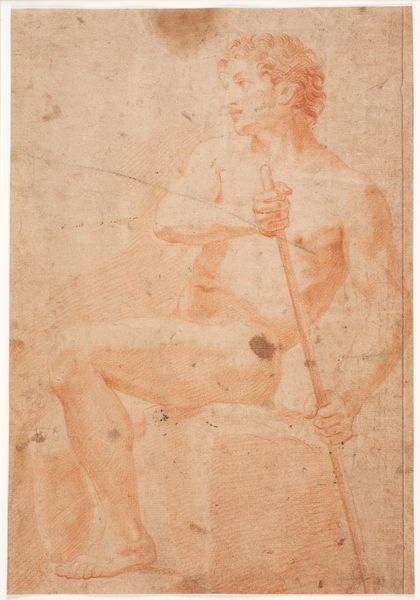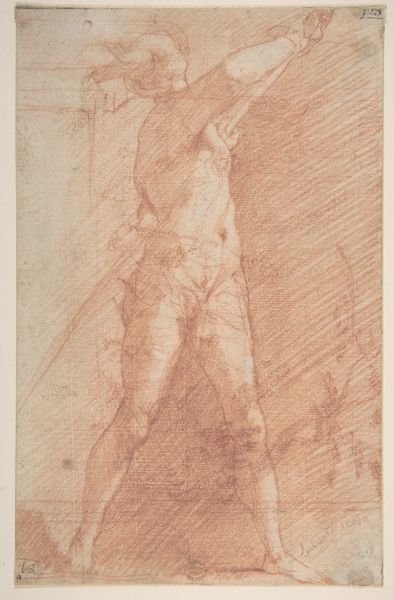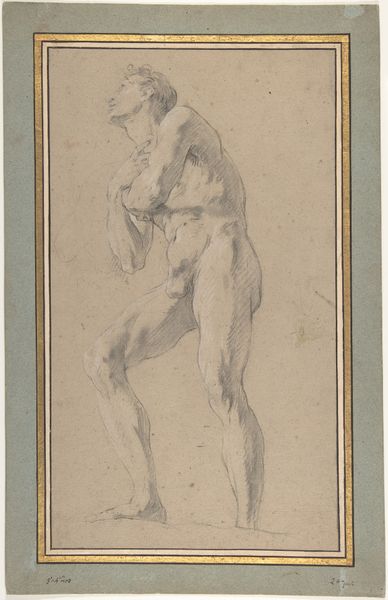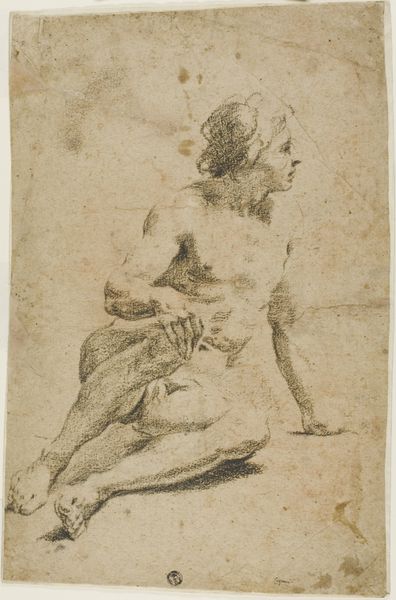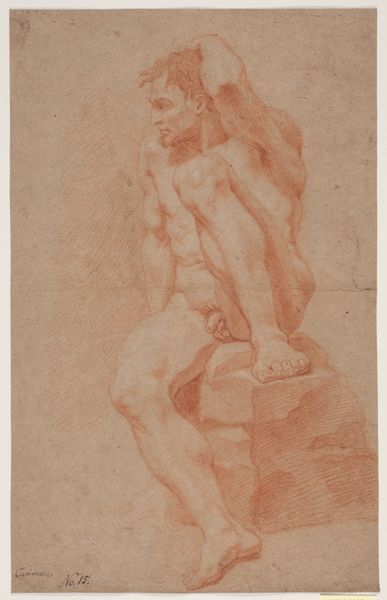
drawing, charcoal
#
portrait
#
drawing
#
toned paper
#
charcoal drawing
#
figuration
#
charcoal art
#
charcoal
#
history-painting
#
italian-renaissance
#
nude
Dimensions: 10 x 4-1/16 in. (25.4 x 10.3 cm)
Copyright: Public Domain
Curator: Immediately, I’m struck by the stark contrast and how the light catches the figure; there’s a tension and vulnerability that makes you feel for him. Editor: Yes, this drawing is "St. Sebastian," created sometime between 1500 and 1600. Though we do not have information on the artist who made it, it resides here at The Metropolitan Museum of Art. It is a compelling Italian Renaissance depiction using charcoal on toned paper. Curator: That toned paper gives such a beautiful texture to the piece, especially the contrast with the charcoal itself, accentuating the torment associated with St. Sebastian. Editor: The medium certainly contributes. Charcoal lends itself to the smoky quality, but also, importantly, allows for easy corrections, as it can be removed relatively simply from the page. This piece would have been used in a workshop to model forms for a sculpture or other piece. Curator: Interesting—knowing its purpose as a study enhances my perception of its power! St. Sebastian is almost always rendered tied and pierced with arrows. These motifs, borrowed from pagan sun worship, carry so much meaning; endurance, faith, and divine favor. Here he seems almost stoic despite the torment, even beautiful. Editor: Certainly, it is difficult to overlook that St. Sebastian served as a figurehead during times of plague and upheaval. As a material object, one must question the intended viewer of this piece, given the cost of art supplies during the early Renaissance and the number of individuals involved in its making. It brings up a dichotomy: high art/religious experience versus studio economics/workshop practices. Curator: The history of its creation is complex, mirroring the complexity of faith it tries to embody. We're talking about survival and overcoming; this depiction holds onto the emotional weight tied to the idea of Renaissance, not only a period of change in the Western canon, but a testament to rebirth after pain. Editor: I agree that its simplicity is striking and belies the history held within the piece. Considering the social landscape of that time certainly expands one’s understanding.
Comments
No comments
Be the first to comment and join the conversation on the ultimate creative platform.
